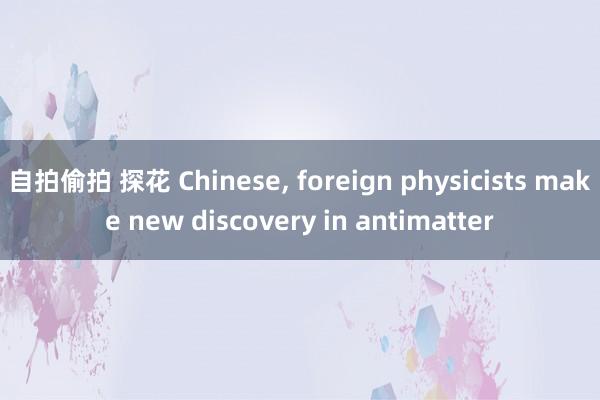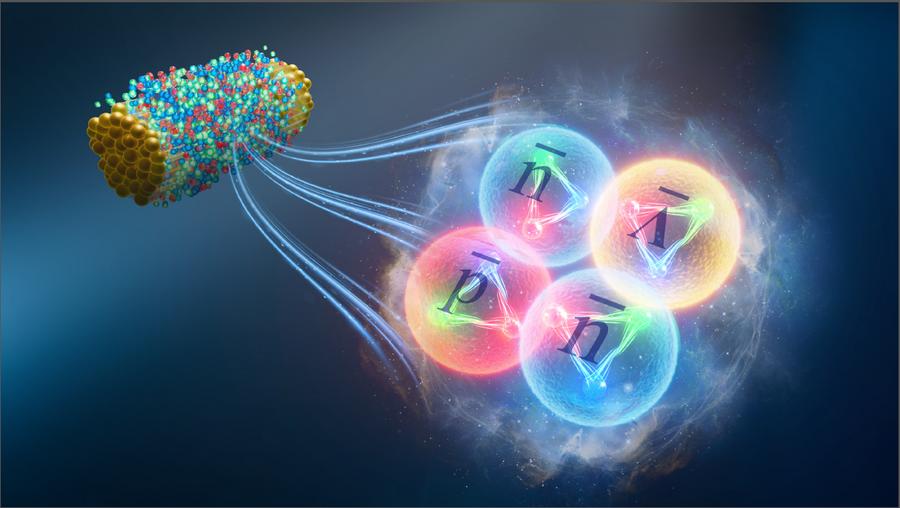自拍偷拍 探花 Chinese, foreign physicists make new discovery in antimatter
发布日期:2024-09-10 01:00 点击次数:121

BEIJING, Aug. 22 (Xinhua) -- A joint research team made up of Chinese and foreign physicists has observed a new antimatter hypernucleus, by using a heavy ion collider in the United States自拍偷拍 探花, marking an important step forward in the exploration of antimatter.
The discovery of anti-hyperhydrogen-4, which is the heaviest antimatter hypernucleus observed in experiments to date, was made by a research team led by the Institute of Modern Physics (IMP) of the Chinese Academy of Sciences. The study was published in the latest issue of the academic journal Nature.
三级电影Current physics assumes that the properties of matter and antimatter are symmetrical and that equal amounts of matter and antimatter existed at the birth of the universe. Fortunately, some mysterious physical mechanism led to a slight asymmetry in the early universe. After the annihilation of most matter and antimatter, approximately one in ten billion matter particles survived, which formed the matter world we see today, scientists explained.
"What caused the difference in quantities of matter and antimatter in the universe? To answer this question, an important approach is to create new antimatter in the laboratory and study its properties自拍偷拍 探花," said Qiu Hao, a researcher from IMP.
In today's matter-dominated world, antimatter is extremely rare because it easily annihilates with surrounding matter. Antimatter nuclei and antimatter hypernuclei are even more difficult to produce. Since scientists predicted the existence of antimatter in 1928, only six types of antimatter (hyper) nuclei have been discovered, Qiu said.
The newly discovered anti-hyperhydrogen-4 was produced at the Relativistic Heavy Ion Collider (RHIC) in the United States. RHIC can accelerate heavy ion beams to nearly the speed of light and make them collide.
These collisions simulate the conditions of the early universe in the laboratory, producing fireballs with temperatures of several trillion degrees, which contain approximately equal amounts of matter and antimatter. As the fireball rapidly expands and cools, some antimatter escapes annihilation with matter and is detected by a detector named STAR.
"After analyzing experimental data of approximately 6.6 billion heavy-ion collision events, we reconstructed anti-hyperhydrogen-4 from its decay products," said Wu Junlin, a PhD student at IMP.
The researchers also measured the lifetime of anti-hyperhydrogen-4自拍偷拍 探花, and found no significant difference from that of its corresponding particle hyperhydrogen-4 within the measurement precision, further verifying the symmetry between matter and antimatter properties. ■
热点资讯
相关资讯
